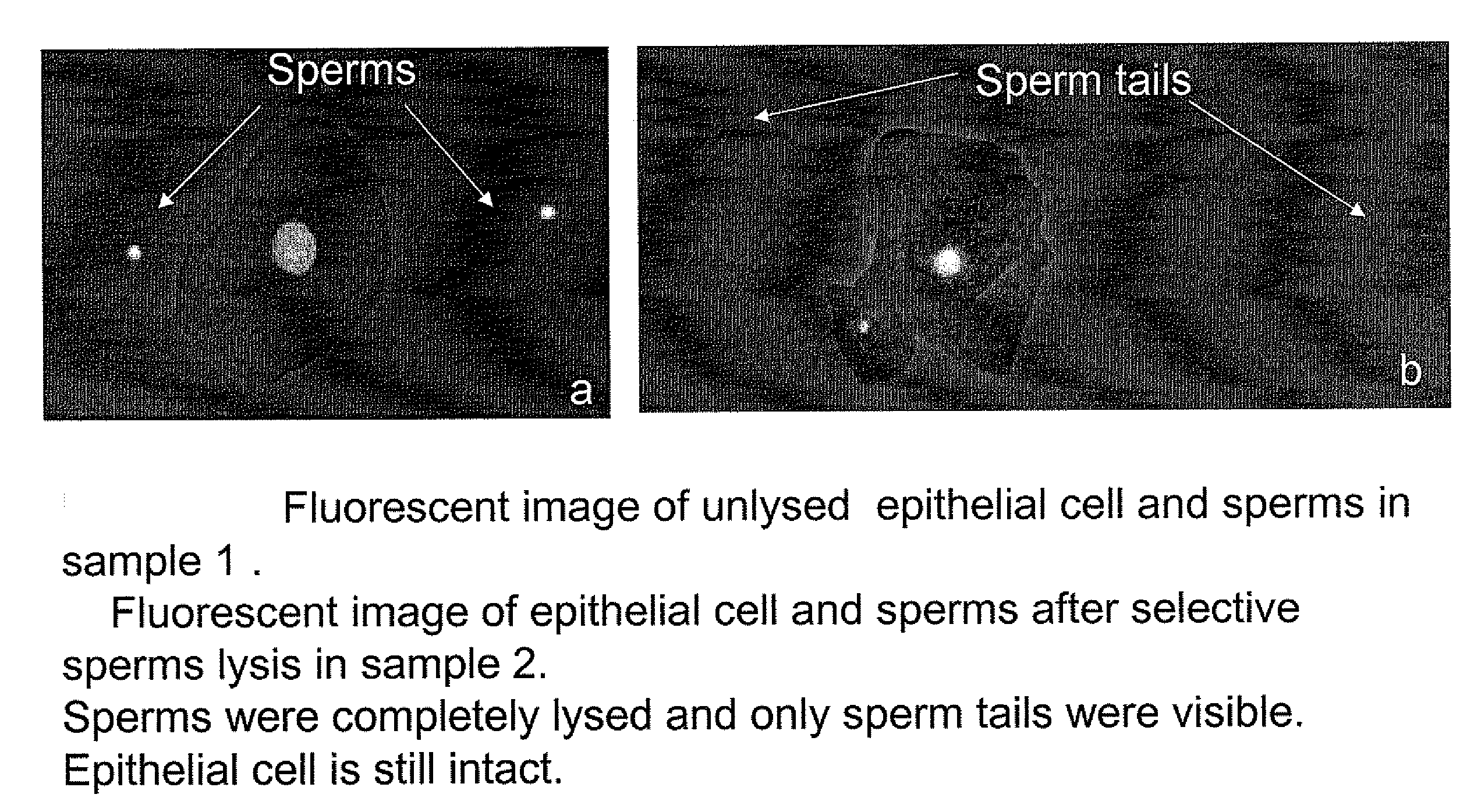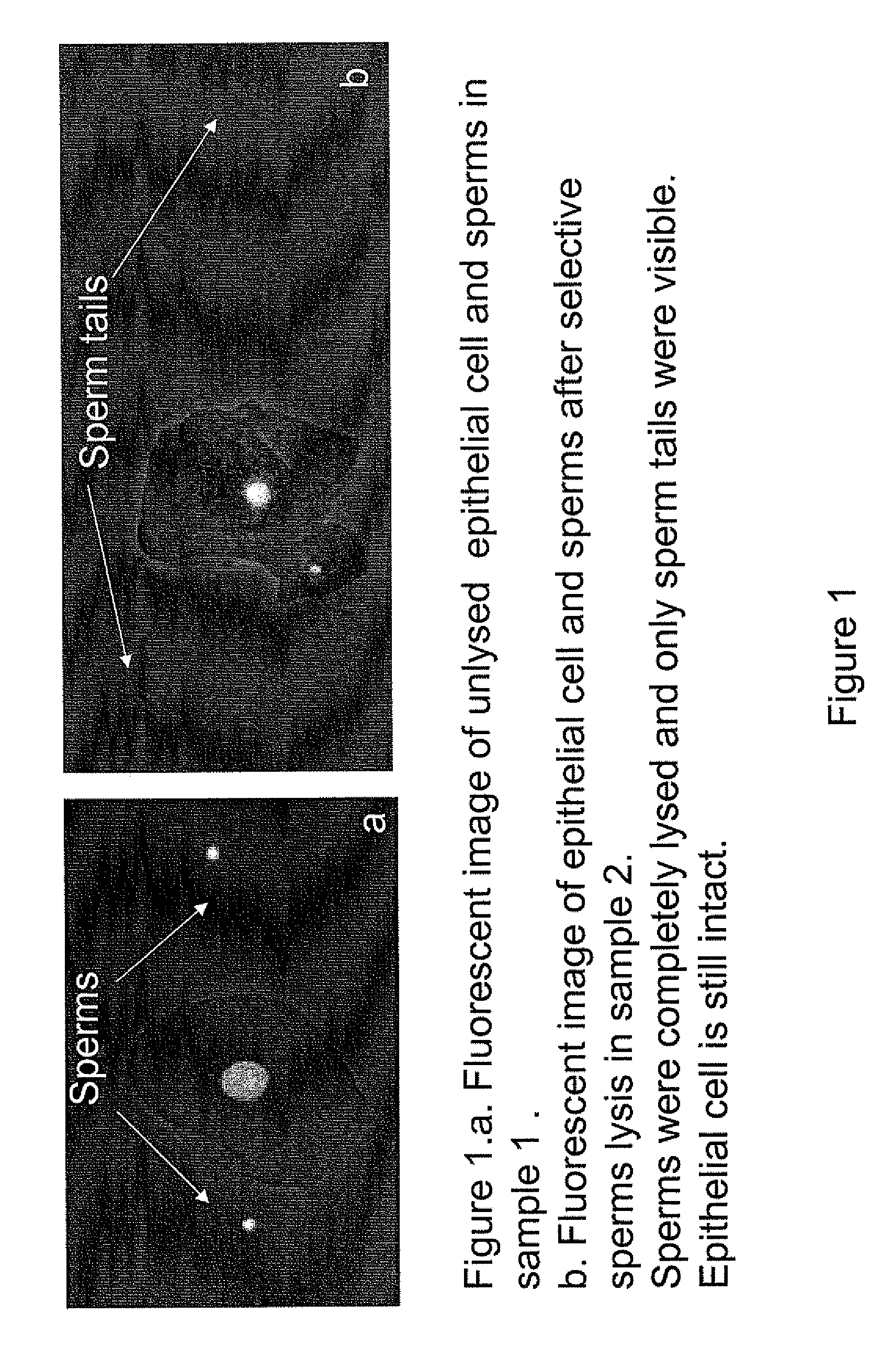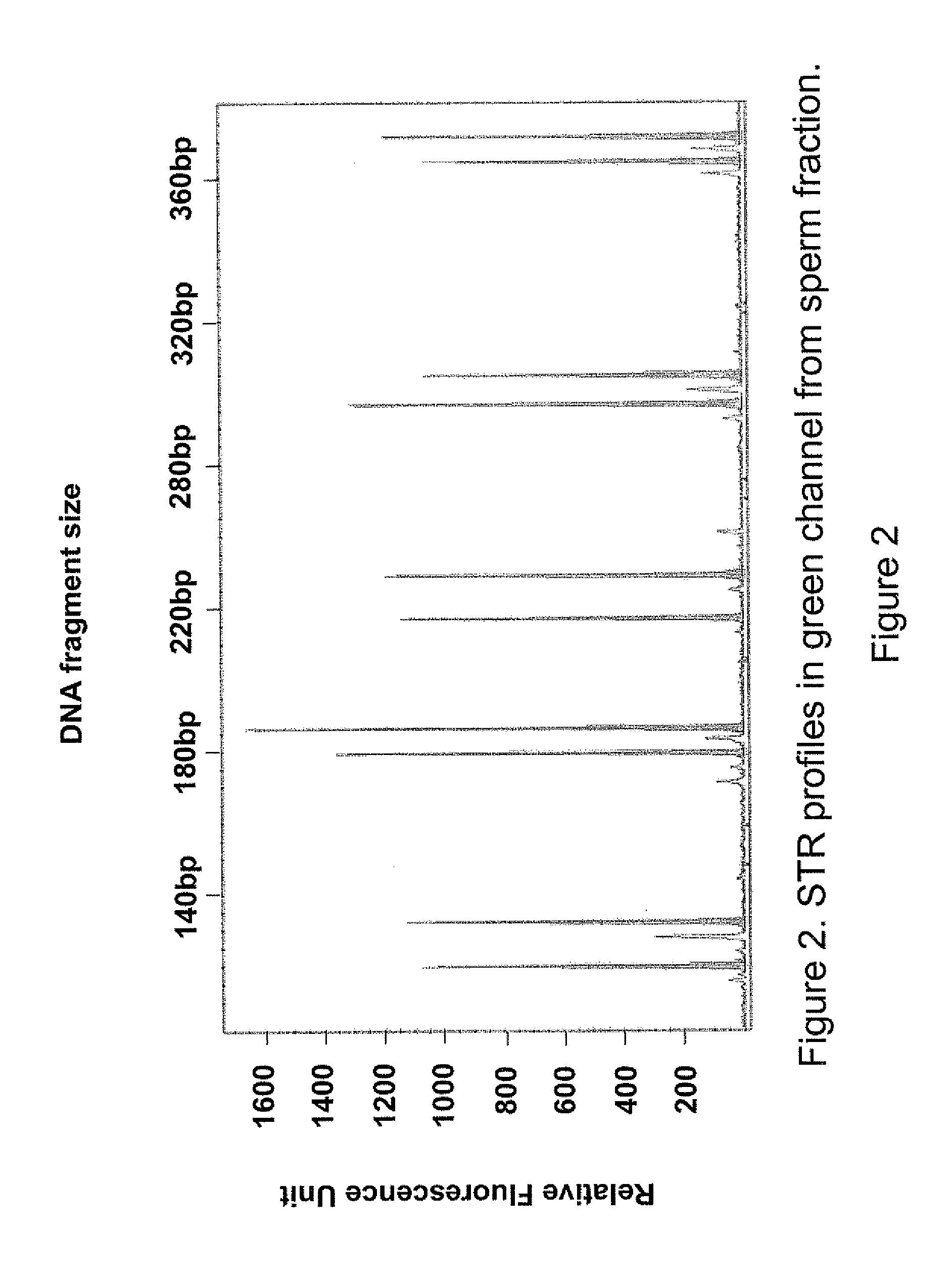Selective Lysis of Sperm Cells
a sperm cell and selective lysis technology, applied in the field of selective lysis of sperm cells, can solve the problems of loss of sperm dna, time-consuming and laborious process of standard protocol,
- Summary
- Abstract
- Description
- Claims
- Application Information
AI Technical Summary
Benefits of technology
Problems solved by technology
Method used
Image
Examples
example 1
Differential Lysis of Sperm Cells
[0104]Two samples were made, each containing about 100K sperm cells and 100K epithelial cells in 60 μl×PBS. 140 μl of 1×PBS and 1 μl of Propidium Iodide (1 mg / mL) were added to the first sample.
[0105]100 μl of 2M KCL, 40 μl of 1M DTT and 1 μl of Propidium Iodide (1 mg / mL) were added to the second sample. The final concentrations in the 200 μl second sample were 1 M KCL, and 200 mM DTT. The sample mixture was then mixed and incubated at room temperature for 5 min. Both samples were examined under fluorescent microscopes.
[0106]FIG. 1a is the cells image from sample 1, FIG. 1b is the cells image from sample 2. This figure shows that the epithelial cells remained intact in both the first sample and the second sample. The sperm cells, in contrast, were lysed in the second sample, but not in the first sample. Thus, the presence of KCL and DTT in the second sample resulted in selective lysis of the sperm cells in that experiment.
example 2
Differential Extraction Protocol for Swab Samples, Sperm Cell Lysis First
[0107]A mock sexual assault swab sample is prepared as follows. Predetermined number of sperm cells is added to a buccal swab containing epithelial cells. The swab is dried at room temperature for 7 days.
[0108]The entire swab is placed into a 1.5 ml centrifuge tube and 800 μl of 1× PBS is added. The swab is incubated for 5 minutes in the 1× PBS at room temperature, with occasional agitation using a pipette tip to dissolve any extraneous DNA into the 1× PBS. The centrifuge tube is then spun at 14 k rpm for 2 minutes and the supernatant is discarded. Additional 800 uL of 1×PBS is added to the swab and the swab is agitated using pipette tip to dissolve any extraneous DNA into the 1×PBS. The centrifuge tube is then spun at 14 k rpm for 2 minutes and the supernatant is discarded.
[0109]The hundred μl of selective sperm lysis buffer (200 mM DTT, 1M KCl) is then added to the swab. The mixture is incubated for 5 minutes...
example 3
Differential Extraction Protocol for Liquid Samples, Sperm Cell Lysis First
[0112]A mock sexual assault liquid sample is prepared as follows. 5K sperm cells are added to 50 ul 1× PBS containing 50K epithelial cells.
[0113]The liquid sample is placed in a tube and 500 μl 1× PBS is added. The mixture is then transferred to a spin-X filter tube and then spun at 6 k rpm for 2 minutes to remove any extraneous DNA from the sample. The filtrate is discarded.
[0114]One hundred μl of selective sperm lysis buffer (200 mM DTT, 1M KCl) is added to the spin-X tube and the mixture is incubated for 5 minutes at room temperature, with occasional agitation with a pipette tip to encourage the sperm DNA to dissolve into the selective sperm lysis buffer. The spin-X tube is then spun at 8 k rpm for 2 minutes. The filtrate containing sperm DNA is removed to a new tube and reserved.
[0115]Three hundred μL of epithelial cell lysis buffer (AB BloodPrep™ DNA purification solution) is added to the spin-X filter t...
PUM
| Property | Measurement | Unit |
|---|---|---|
| Molar density | aaaaa | aaaaa |
| Molar density | aaaaa | aaaaa |
| Molar density | aaaaa | aaaaa |
Abstract
Description
Claims
Application Information
 Login to View More
Login to View More - R&D
- Intellectual Property
- Life Sciences
- Materials
- Tech Scout
- Unparalleled Data Quality
- Higher Quality Content
- 60% Fewer Hallucinations
Browse by: Latest US Patents, China's latest patents, Technical Efficacy Thesaurus, Application Domain, Technology Topic, Popular Technical Reports.
© 2025 PatSnap. All rights reserved.Legal|Privacy policy|Modern Slavery Act Transparency Statement|Sitemap|About US| Contact US: help@patsnap.com



